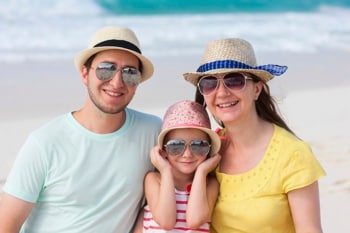Skin Cancer Awareness
 Learn how to lower your skin cancer risk and get resources to share from CDC!
Learn how to lower your skin cancer risk and get resources to share from CDC!Skin cancer is the most common cancer in the United States. Most cases of melanoma, the deadliest kind of skin cancer, are caused by exposure to ultraviolet (UV) rays. To lower your skin cancer risk, protect your skin from the sun and avoid indoor tanning.
Sun Safety Tips
Check the U.S. Environmental Protection Agency’s UV Index before you spend time outdoors and plan your sun protection accordingly, using these tips—
- Seek shade, especially during midday hours.
- Cover up with clothing to protect exposed skin.
- Wear a hat with a wide brim to shade the face, head, ears, and neck.
- Wear sunglasses that wrap around and block as close to 100% of both UVA and UVB rays as possible.
- Use sunscreen with broad spectrum (UVA and UVB) protection and a sun protection factor (SPF) 15 or higher.
- Remember to reapply sunscreen at least every 2 hours and after swimming, sweating, or toweling off.
Fast Facts About Skin Cancer
- Unprotected skin can be damaged by the sun’s UV rays in as little as 15 minutes. Yet it can take as long as 12 hours for skin to show the full effect of sun exposure. Plan ahead so that when you’re having fun outdoors, you won’t forget to protect yourself from the sun.
- Even if it’s cool and cloudy, you still need protection. UV rays, not the temperature, do the damage.
- Tanned skin is damaged skin. Any change in the color of your skin after time outside—whether sunburn or suntan—indicates damage from UV rays.
- Anyone can get skin cancer, but some things put you at higher risk.
- Indoor tanning exposes users to both UVA and UVB rays, which damage the skin and can lead to cancer.
- A change in your skin is the most common sign of skin cancer. This could be a new growth, a sore that doesn’t heal, or a change in a mole.






















.png)











No hay comentarios:
Publicar un comentario